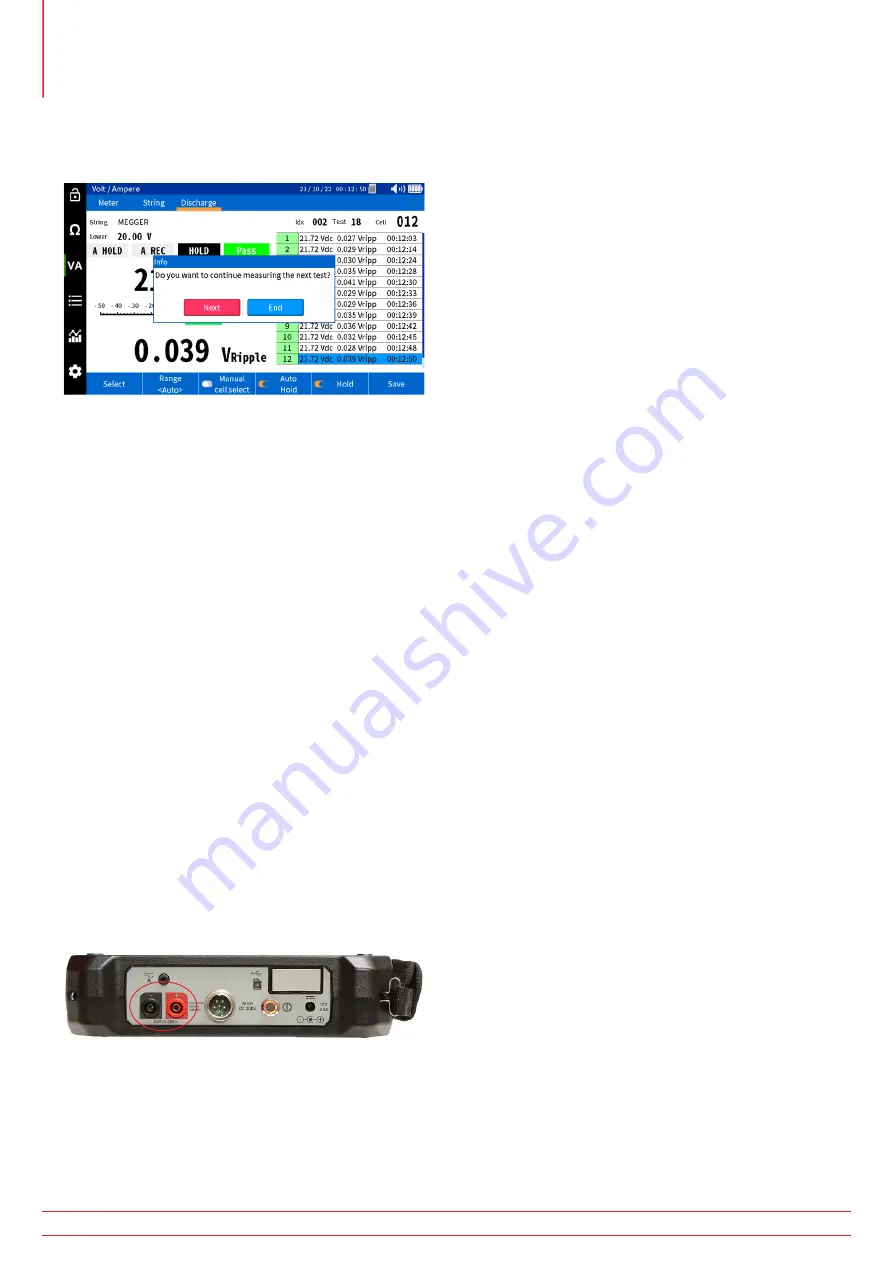
When the end of the string is reached, the unit will prompt the user to either end the test or select “next” to perform
the next pass through the string.
Performing an impedance and discharge test (special testing)
The BITE5 can measure the voltage and temperature and impedance throughout a discharge test. Performing this test
will allow the trending of the cell impedance throughout the discharge process. This will allow the operator to establish
an ohmic value that correlates with the discharged battery. This value can then be set as the alarm (upper 2) limit for
the string.
NOTE:
This value will be associated with the internal impedance changes associated with sulfated plates. It may not
correlate with other causes of cell aging such as plate corrosion.
In this mode the BITE5 will also measure the cell temperature during the discharge. The temperature will be taken off
the negative plate. This will be valid only for sealed batteries. Flooded cells the temperature should be taken from the
electrolyte.
Program the Torkel for the desired discharge test. Place the Torkel across the battery string and start the discharge test.
The BITE5 can then be used to take manual measurements of the cell voltage throughout the discharge process.
In this mode, the unit will record the DC voltage of each cell as cell impedance and cell temperature.
Operation:
Connect the voltage leads to voltage inputs of the BITE5.
If measuring current, then plug the CT into the BITE5 CT input.
www.megger.com
BITE5
30
Performing an impedance and discharge test (special testing)
















































